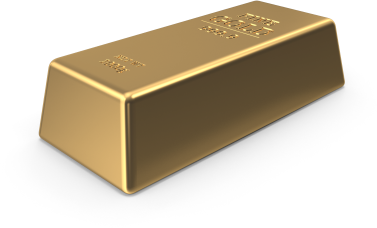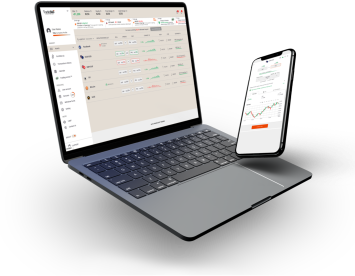What is CFD Trading?
CFD trading offers investors and traders the chance to profit from an asset’s price moves without actually having to own the asset itself.
Register Now
How Does CFD Trading Work?
New and unfamiliar traders often ask themselves what is CFD trading, and how does it work? And the answer, while a little technical, is quite simple really: as an investor or trader, you can open a position on a certain asset, no matter its current price point, for example, Gold at $1735.50.
At that point, your broker will offer you two options – you can either back the asset (meaning you believe it will go higher by the end of the selected period) or short it (meaning you believe it will drop in value). Let’s say you’ve opened a position on Gold to increase in value.
When you close the position, you either lose on the position if the asset decreases in value, or you win on the position if it increases beyond the spread.
The broker makes their living through the differences between the buy and sell prices on an asset when you open the position.

Analysing Popular CFD Markets
Because CFD markets come in many shapes and sizes and often vary from broker to broker, some brokers offer a multitude of Bstocks while others focus on currency pairings and others still can run the entire gamut from Adidas stock to the Yuan-AUD pairing. CFD indicators need to be just as versatile in their ability to estimate outcomes.
To that end, indicators come in many forms, with each focusing on a slightly different method of taking in past results and laying out a possible pattern for the future.
The moving average can be used to identify price trend directions.
The MACD takes two moving averages and compares one with the other with a divergence signalling a slowing down in the market while a convergence likely means the same market is preparing to reverse.
Bollinger Bands are most useful when assets trade outside normal levels. The tighter the two bands are, the lower the volatility for the asset in question.
These are just a few of the popular Indicators one can use when trading CFDs; there are many more, each with a specific purpose and an area in which it functions optimally.


Advantages of Contract for Difference
Although often associated with greater risk due to their being leveraged products, CFDs have taken off in recent years for several reasons:
First of all, thanks to that leverage, financial markets are now accessible to many classes of traders who otherwise could not afford to partake in the excitement of financial markets. Clearly, this requires that they be educated in the nuances of the field; meanwhile they remain susceptible to the pitfalls. Aware of this, many brokers are taking steps to allay many of these.
Thus, for example, besides negative balance protection, thanks to self-select leverage-per-position, it is also possible to mitigate one’s risk to a greater degree.
Another major advantage in trading CFDs and derivatives, in general, is the possibility to short the underlying asset. When you own a stock or commodity, for example, you expect its value to increase before you can successfully sell it for a profit. If it takes a dip you have two choices: either sell for a loss or wait and hope the trend shifts.
With CFDs you can open positions on an asset’s increasing value by going long (investing in a BUY position) or its decreasing value by going short (investing in a SELL position).
There are more advantages you can enjoy when trading in CFDs, so the only question is why you aren’t trading them yet?

